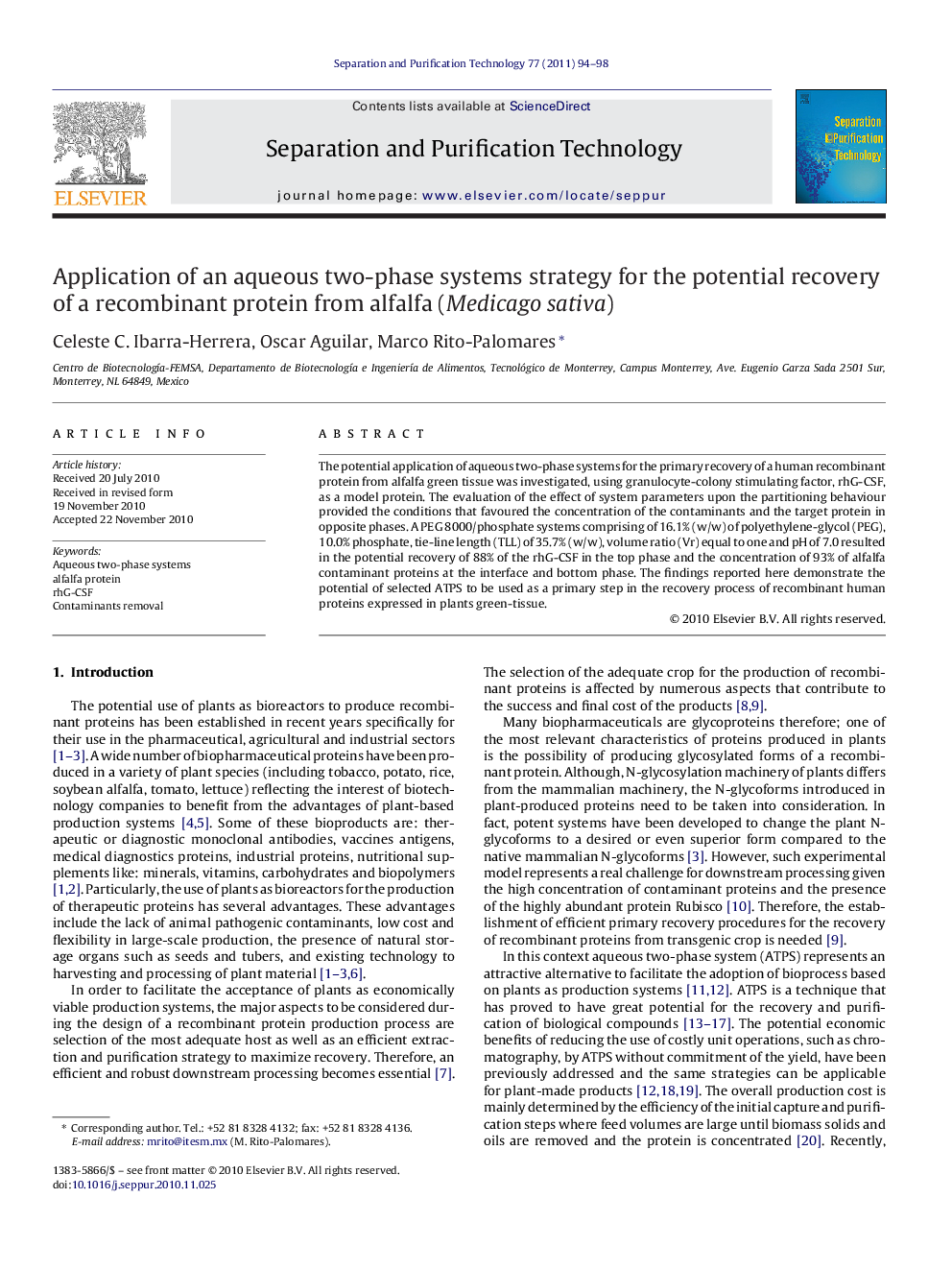| Article ID | Journal | Published Year | Pages | File Type |
|---|---|---|---|---|
| 642849 | Separation and Purification Technology | 2011 | 5 Pages |
The potential application of aqueous two-phase systems for the primary recovery of a human recombinant protein from alfalfa green tissue was investigated, using granulocyte-colony stimulating factor, rhG-CSF, as a model protein. The evaluation of the effect of system parameters upon the partitioning behaviour provided the conditions that favoured the concentration of the contaminants and the target protein in opposite phases. A PEG 8000/phosphate systems comprising of 16.1% (w/w) of polyethylene-glycol (PEG), 10.0% phosphate, tie-line length (TLL) of 35.7% (w/w), volume ratio (Vr) equal to one and pH of 7.0 resulted in the potential recovery of 88% of the rhG-CSF in the top phase and the concentration of 93% of alfalfa contaminant proteins at the interface and bottom phase. The findings reported here demonstrate the potential of selected ATPS to be used as a primary step in the recovery process of recombinant human proteins expressed in plants green-tissue.
Research highlights▶ Practical strategy that uses aqueous two-phase partition to establish the conditions under which a target protein (rhG-CSF) and the contaminant proteins from alfalfa green-tissue extract concentrated in opposite phases. ▶ Aqueous two-phase partition is proposed as a primary recovery stage in route to the recovery of recombinant protein from plants green-tissue. ▶ The experimental model studied suggested that rhG-CSF could be readily extracted and purified from alfalfa. ▶ The novel approach proposed here represents a practical strategy that can simplify the way in which recombinant proteins expressed in plants can be recovered.
